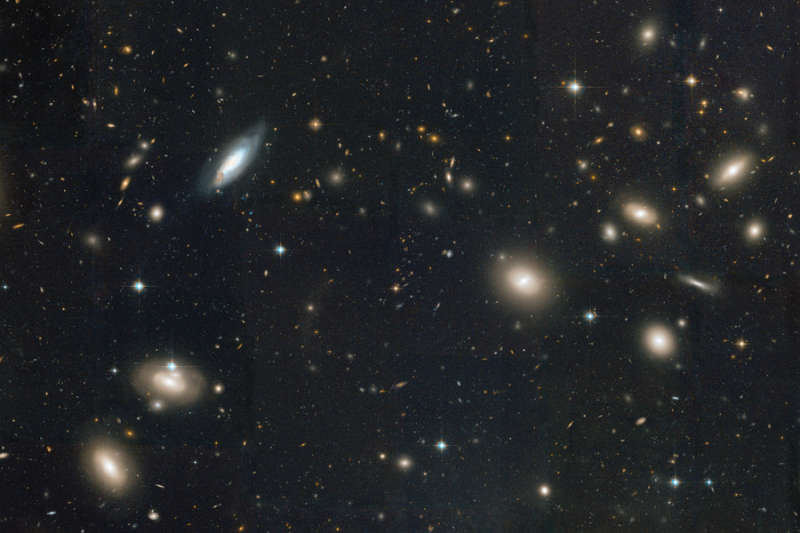Explanation: Almost every object in the above photograph is a galaxy. The Coma Cluster of Galaxies pictured above is one of the densest clusters known - it contains thousands of galaxies. Each of these galaxies houses billions of stars - just as our own Milky Way Galaxy does. Although nearby when compared to most other clusters, light from the Coma Cluster still takes hundreds of millions of years to reach us. In fact, the Coma Cluster is so big it takes light millions of years just to go from one side to the other! The above mosaic of images of a small portion of Coma was taken in unprecedented detail by the Hubble Space Telescope to investigate how galaxies in rich clusters form and evolve. Most galaxies in Coma and other clusters are ellipticals, although some imaged here are clearly spirals. The spiral galaxy on the upper left of the above image can also be found as one of the bluer galaxies on the upper left of this wider field image. In the background thousands of unrelated galaxies are visible far across the universe.
Note: APOD started thirteen years ago today.
1999 2000 2001 2002 2003 2004 2005 2006 2007 2008 2009 2010 2011 2012 2013 2014 2015 2016 2017 2018 2019 2020 2021 2022 2023 2024 2025 |
Yanvar' Fevral' Mart Aprel' Mai Iyun' Iyul' Avgust Sentyabr' Oktyabr' Noyabr' Dekabr' |
NASA Web Site Statements, Warnings, and Disclaimers
NASA Official: Jay Norris. Specific rights apply.
A service of: LHEA at NASA / GSFC
& Michigan Tech. U.
|
Publikacii s klyuchevymi slovami:
Coma Cluster - Skoplenie galaktik
Publikacii so slovami: Coma Cluster - Skoplenie galaktik | |
Sm. takzhe:
Vse publikacii na tu zhe temu >> | |
